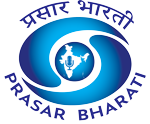India observes Janjatiya Gaurav Divas, or Tribal Pride Day, each year on November 15 to commemorate the birth anniversary of Birsa Munda, the tribal freedom fighter born in 1874. To mark the 150th anniversary of his birth, the government has designated 2024–25 as Janjatiya Gaurav Varsh.
As part of the yearlong commemoration, a special fortnight from November 1 to 15 is being organised to honour tribal contributions to India’s freedom struggle and highlight the diversity of tribal cultures and heritage.
Government Initiatives and Focus Areas
The Ministry of Tribal Affairs is leading the cultural programmes, exhibitions and workshops across the country to spotlight tribal histories and knowledge systems. A key component of Janjatiya Gaurav Varsh is the creation of 11 museums dedicated to tribal freedom fighters under the Support to Tribal Research Institutes scheme.
These include major museum projects in Ranchi, Rajpipla, Lambasingi and Raipur, which together account for a total project outlay of over ₹390 crore, supported by nearly ₹143 crore in central grants. Similar projects are also taking shape in Wayanad, Chhindwara, Jabalpur, Hyderabad, Tamenglong, Kelsih and Ponda.
With work advancing steadily across states, four museums—Raipur, Ranchi, Chhindwara and Jabalpur—are already operational, strengthening efforts to document and showcase tribal resistance movements and cultural heritage.
Major Museums and Themes
The Shaheed Veer Narayan Singh Memorial & Tribal Freedom Fighters Museum in Raipur, inaugurated on November 1 by Prime Minister Narendra Modi, showcases 650 sculptures across 16 galleries along with digital installations, projection mapping, audio-visual exhibits, an AI photo booth and RFID-enabled displays.
It chronicles major tribal uprisings—such as the Halba, Sarguja, Bhopalpattanam, Paralkot, Tarapur, Meria, Koi, Lingagiri and Muria revolts—and the Bhumkal Kranti.
The museum also depicts tribal village life, belief systems and movements like the Rani Cho-Ris Kranti (1878), Jhanda Satyagraha and Jungle Satyagraha. Veer Narayan Singh, a Binjhwar leader, was executed on December 10, 1857 after resisting British grain hoarding during the 1856 famine.
The Bhagwan Birsa Munda Tribal Freedom Fighter Museum in Ranchi, inaugurated on November 15, 2021, highlights Birsa Munda’s leadership of the Ulgulan movement (1899–1900), which demanded self-rule and community land rights. Birsa, revered as Dharti Aaba, died in Ranchi Jail at the age of 25.
The Badal Bhoi State Tribal Freedom Fighters Museum in Chhindwara, inaugurated on November 15, 2024, honours Badal Bhoi, who mobilised tribal communities against British exploitation and died in prison in 1940, reportedly after being poisoned.
The Raja Shankar Shah and Kunwar Raghunath Shah Museum in Jabalpur commemorates two Gond royal descendants known for their revolutionary poetry. Both were executed by the British on September 18, 1858.
Cultural Events Across States
As part of the fortnight-long celebrations, states across the country are organizing events that showcase tribal traditions and histories.
Jammu & Kashmir conducted workshops on legal awareness and education, while Meghalaya hosted tribal cultural performances. Rajasthan organised competitions for students in Eklavya Model Residential Schools, and Andhra Pradesh held a cultural festival showcasing tribal art and heritage.
Sikkim arranged specialised training for tribal language teachers, Manipur conducted cleanliness drives and tributes at memorial sites, Odisha displayed Birsa Munda-themed exhibitions, and Gujarat hosted a national symposium on his legacy attended by more than 600 academicians and tribal leaders.
Strengthening Tribal Knowledge Systems
To safeguard tribal knowledge systems and oral traditions, the government has rolled out initiatives such as the Adi Sanskriti Project, the Adi Vaani translation tool, the Tribal Digital Document Repository, the Varnamala and Oral Literature Initiative and several indigenous knowledge research programmes.
Large cultural platforms like the Aadi Mahotsav, along with state-supported craft fairs and cultural festivals, further promote tribal art, literature and craft traditions. Together, these efforts aim to preserve tribal languages and expand opportunities for tribal artists, writers and cultural practitioners.
Preserving Tribal Legacy
Janjatiya Gaurav Divas highlights the enduring contributions of India’s Scheduled Tribes. Through museum development, cultural outreach and digital archiving under Janjatiya Gaurav Varsh, the government aims to strengthen awareness of tribal resistance movements and cultural heritage in line with the vision of Ek Bharat, Shreshtha Bharat.














